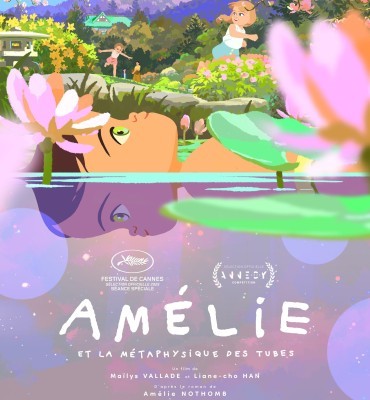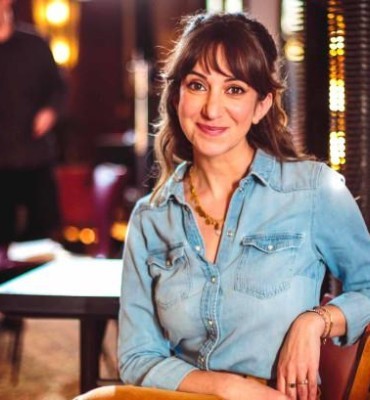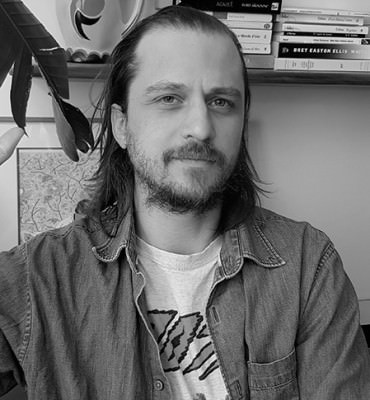The creative journey: Ester Manas, fashion designer
Atelier de Sèvres is celebrating its 40th anniversary—40 years at the service of contemporary creation, in all areas of art and animated film. Forty years of graduates who have now become recognized artists in France and around the world. Discover the portraits of these former students who are a real asset to our establishment today.
Ester Manas, fashion designer, Atelier de Sèvres student in 2011
Interview by Nadine Vasseur
The landing page of Ester Manas' website opens with the words "Size (doesn’t) matter", a slogan-like phrase that immediately affirms the identity of this up-and-coming fashion brand. While the market is focused on standard sizes, the young designer has chosen to undermine the size system which results in the exclusion of non-standard bodies. Its concept is to offer high-quality, attractive clothes, made in one size, and adaptable to all women's bodies, from sizes XXS to XXXL. Flattering all body shapes, its elegant clothes are cleverly cut; they are adjustable thanks to a system of press-studs, lacing, cords, folds, velcro and loops. And this little revolution has conquered the fashion industry. Manas' brand won the Galeries Lafayette prize at the Hyères fashion festival in 2018 and its development is also supported by the Fédération de la Haute Couture et de la Mode. Barely a year after its creation, the line is sold at Galeries Lafayette and Printemps in Paris, as well as in Nice, London and Los Angeles.
Fashion came to the fore in Ester Manas' career in a rather unexpected way. After high school, she wanted to go on to study art, without knowing what type. So she enrolled at Atelier de Sèvres. "I chose this school for a very simple reason: because it had very good results for the entrance exams! To pay for my studies, I had to take out a loan from the bank and it was very difficult for me to do so over a long period of time. So I wanted a school that could deliver immediate results." At Atelier de Sèvres, she was introduced to a large number of techniques: life drawing, observational drawing, art history and even digital disciplines such as Photoshop and Illustrator. The trigger that would later lead her to fashion occurred during her final weeks at the Atelier. "We were encouraged to do our own work and I started knitting a kind of origami from which I built bodies. It was through this path of textiles, of an interest in three-dimensional shapes, that my interest in fashion was born. It doesn’t stem from any kind of interest in ‘Couture’ or magazine-type images, but really from the passion of constructing a 3-D object with my hands." She then passed the entrance exam to the l’Ecole Nationale des Arts Visuels de la Cambre in Brussels where she started training in graphic design before joining the "Styling and Fashion Design" course. "What drew me to fashion rather than, say, sculpture, was being able to have an impact on daily life. Hoping to see the results of my work on the street, being part of people's lives, is what I like most. There is a social appeal to me, even if that is a catch-all word. Let’s say I like listening to people and trying to find answers to the problems they face." Problems which, in this case, she shares. Ester Manas is a size XL and has always struggled to find clothes to fit her. So she wondered: Why is fashion not interested in small sizes and large sizes? Why this obsession with standard sizes when 39% of women are larger than an XL? "I was already pondering this question at the entrance exam to La Cambre. To introduce ourselves, we were asked to produce a magazine around a theme—I suggested one on the theme ‘Big’. After that, during my years of study, I had no choice other than to work on mannequins which were all the same size: XS or S. It was only during the second year of my Master’s that I was finally able to design a collection in keeping with my values: to make fashion for everyone. I chose 12 women with 12 different bodies and I started by making tailor-made clothes for each of them in order to understand the issues.” Many inventive solutions arose from this, that were then implemented into making the clothes of her collections.
When asked if her work is feminist, Ester Manas hesitates. "Of course I am for the emancipation of women but what I do wasn’t born from a feminist stance. I often hear that I was lucky because my Big Again collection came out at the same time as the MeToo movement. But that has nothing to do with it! On the other hand, to claim that what I am doing is not political would, of course, also be untrue.” If there is one thing Ester Manas cares about most, it is making fashion in a way that makes sense. "I am not the only person of my generation who wants to create something that’s not just beautiful and bankable; there are many of us and it is very reassuring. Our clothes, while being high quality, are made, for example, from second-hand fabrics, leftover stock or organic fabrics. They are produced in a socio-professional reintegration workshop which is a stone's throw from our studio in Brussels. Community and social matters are values that we hold dear. Today there are all kinds of brands that want to exist without having anything to say. To what end? Especially since we are living in a time when we have to stop doing whatever we want without thinking, where we have to stop consuming at all costs. Wanting to exist when there is nothing to offer other than covetable candy, and refusing to be responsible, makes no sense to me."
About the author
Nadine Vasseur is a journalist and writer. In addition to producing the Panorama programme on France Culture for 15 years, she is also the author of numerous books of interviews and art books including "Les Plis" and "Les Incertitudes du corps" published by Editions du Seuil. In 2019, she published "Simone Veil. Vie publique. Archives privées" with Tohu Bohu Editions.



